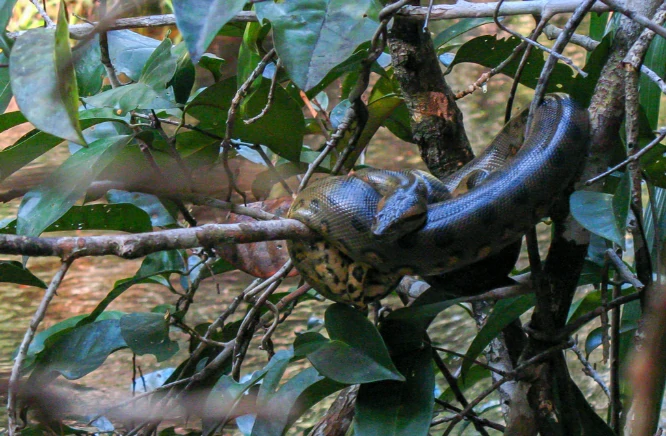Anacondas are some of the biggest snakes on Earth. Just seeing one can make your imagination run wild. People say they eat humans. Others say they grow longer than a bus. But what’s really true? Do anacondas actually eat people?
Technically, a very large anaconda could swallow a human, but it never happens. There are no verified cases of an anaconda successfully eating a person. Humans simply aren’t their natural prey. To understand why, we need to look at how anacondas live, what they eat, and how they behave in the wild.
What Kind of Snake Is an Anaconda?
When people say “anaconda,” they usually mean the green anaconda (Eunectes murinus). They live in South America, mostly in the Amazon rainforest and nearby rivers.
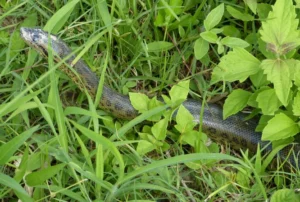
They belong to a small group of snakes called Eunectes. There are a few species, but the green anaconda is by far the biggest and most well-known.
Anacondas are semi-aquatic. That means they live in both water and on land.
You’re more likely to see one drifting quietly in a river or swamp than crawling across dry ground.
Water is their home, and their bodies are built for it.
How Big Can Anacondas Really Get?
Green anacondas can get enormous. Some grow over 20 feet long and weigh more than 500 pounds’ Their bodies are thick enough that a human would look tiny next to them.
These snakes are muscular and strong. They can squeeze and overpower large animals with ease.
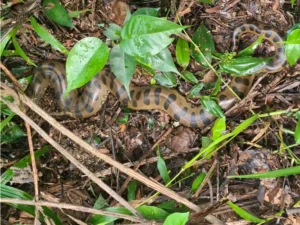
But here’s the thing: most anacondas aren’t the giant monsters you see in documentaries.
The vast majority of adults are about 10 to 15 feet long. Only a tiny fraction ever reach the legendary sizes that could even fit a human in their mouth.
Even the smaller adults are extremely powerful. They can constrict animals like capybaras or caimans without trouble.
That strength is part of why people imagine anacondas hunting humans. But being big doesn’t mean they actually do.
What Do Anacondas Normally Eat?
Anacondas are opportunistic predators. They eat what’s around and what they can handle safely. Humans aren’t part of that menu.
Smaller anacondas eat frogs, fish, and rodents. As they grow, they can take bigger animals like:
-
Capybaras – Giant rodents common near rivers and wetlands.
-
Caimans – Small crocodile-like reptiles. Snakes have to be careful and patient to catch them.
-
Wild pigs, deer, and monkeys – Anything that wanders close to the water can become food.
-
Birds and smaller reptiles – If they come near the riverbank, the snake might grab them.

Humans fight back, make noise, and move too fast to ambush safely. Even a huge anaconda has to think about whether it’s worth the risk.
Why Anacondas Almost Never Attack Humans
There are a few simple reasons why anacondas don’t hunt people.
First, humans aren’t natural prey. Most people are too big for a snake to handle safely. Predators like anacondas look for prey that won’t hurt them in a fight.
Second, anacondas are shy. They spend a lot of time hiding in water, mud, or plants. Unlike the aggressive snakes in movies, they’d rather slip away than confront a human.
Third, humans are alert, noisy, and move around a lot. Anacondas rely on stealth and surprise. Someone walking along a riverbank is nothing like a slow, unaware capybara, which is the kind of meal they prefer.
Finally, swallowing a human would take a lot of energy and leave the snake vulnerable. Digestion slows them down for weeks, and that’s risky in the wild.
Even the biggest constrictor snakes rarely attack humans. Most cases involve defensive strikes, not hunting.
Could an Anaconda Swallow a Human?
Here’s where it gets a little scary, but also very unlikely. A very large anaconda could technically swallow a person. Their jaws stretch wide, and ligaments let their mouth expand around big prey.
There are reports of giant anacondas in remote areas attacking livestock. But there are some important points to know:
-
Size matters – Only the absolute largest anacondas could fit an adult human in their mouth.
-
Digestive challenge – Even if a snake swallowed someone, it would take weeks to digest, during which it’s slow and vulnerable.
-
Humans fight back – Unlike cows or pigs, we can bite, kick, and make noise. That makes it risky for the snake.
Hollywood loves giant snakes attacking humans, but in real life, the biology and behavior of anacondas make this extremely unlikely.
Why People Think Anacondas Eat Humans
Movies and sensational media spread myths about anacondas. A few things make these stories believable:
-
Their huge size – It’s easy to imagine a 20-foot snake eating a human.
-
Rare encounters – Any unusual sighting can turn into a viral story.
-
Exaggeration – Documentaries sometimes make snakes look more aggressive than they are.
Scientists studying anacondas in the wild report that most interactions with humans are harmless. These snakes usually run away when they see people.
How Anacondas Hunt Their Prey
Anacondas are ambush predators. They wait quietly, partly underwater, blending into mud and plants. When an animal comes close, they strike fast, grabbing it with strong jaws and coiling their bodies to squeeze.
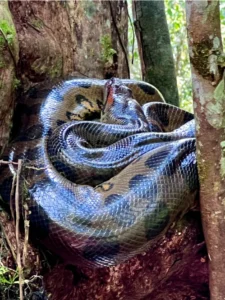
They prefer slow or unaware animals like capybaras or pigs. Humans are alert, noisy, and hard to ambush, making us inconvenient prey.
Even a very hungry snake won’t risk attacking a full-grown adult human.
Are There Any Snakes That Eat Humans?
It’s very rare, but some other large constrictors have attacked and sometimes eaten humans:
-
Reticulated pythons in Southeast Asia have swallowed adult humans.
-
African rock pythons have occasionally attacked livestock and, in extremely rare cases, adults.
Even then, these are exceptions. They usually happen near villages where snakes come into close contact with humans.
The green anaconda’s remote habitat and shy nature make human predation almost nonexistent.
Real-Life Encounters People Have Had With Anacondas
People in the Amazon or Orinoco basins sometimes see huge green snakes in rivers or swamps. Most sightings are harmless.
Villagers report snakes large enough to wrap around logs, capybaras, or pigs, but humans are usually ignored.
Biologists following anacondas in the wild notice the same things:
-
They avoid humans whenever possible.
-
They spend most of their time hidden in water.
-
They use their strength for normal prey, not people.
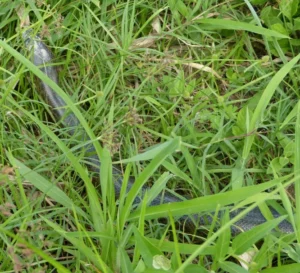
Humans aren’t on the menu. Encounters that seem dangerous are usually defensive, accidental, or exaggerated.
How to Stay Safe Around Anacondas
If you’re in areas where green anacondas live, a few simple tips are all you need:
-
Move slowly in rivers or marshes to avoid surprising a snake.
-
Give any snake plenty of space. They’re shy and likely to leave if you don’t bother them.
-
Keep livestock or pets away from river edges. This reduces the snake’s interest in coming close.
-
Watch snakes from a distance rather than trying to touch or handle them. Handling can stress the snake and trigger defensive behavior.
Following these steps keeps encounters safe. Most people in these regions never have a dangerous experience.
Why Humans Are Not Typical Prey
Humans just don’t fit an anaconda’s usual diet. We’re too big, too alert, and can fight back. Hunting a human takes a lot of energy and is risky.
Meanwhile, capybaras, birds, and caimans are easy meals.
Even the biggest anacondas go for animals they can manage safely. Movies and stories exaggerate the danger, but in reality, anacondas are powerful but careful hunters.
Conclusion
So, do anacondas eat people? No. There are no documented cases of it happening. Humans aren’t their natural prey, and encounters that look scary are usually defensive or accidental.
These snakes are some of the most impressive and powerful reptiles on Earth. They can hunt large animals, hide in water, and strike fast.
But even with their size and strength, humans are usually ignored. Attacks are extremely rare.
Next time you hear a story about a giant anaconda dragging someone under water, remember it’s almost certainly a myth. These snakes are interesting creatures that deserve respect, not fear.
By giving them space and watching safely, you can enjoy one of nature’s most incredible predators without ever being in danger.
Hi, my name is Ezra Mushala, i have been interested animals all my life. I am the main author and editor here at snakeinformer.com.

